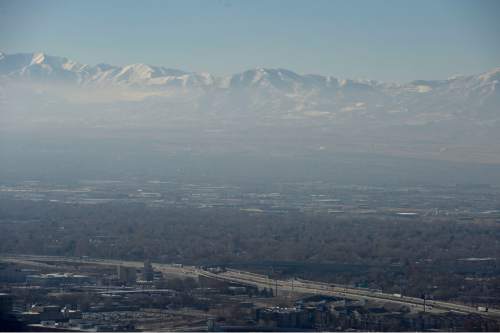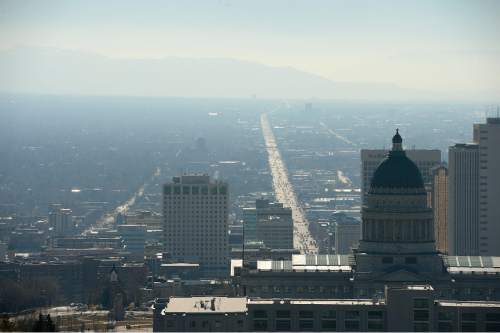This is an archived article that was published on sltrib.com in 2015, and information in the article may be outdated. It is provided only for personal research purposes and may not be reprinted.
Middle-age men, who already have the highest risk for suicide, are even more likely than others to kill themselves after short-term exposure to air pollution.
That's the finding of researchers at the University of Utah, who are studying 10 years of records for Salt Lake County residents who committed suicide.
"This suggests that vulnerability to suicide following air pollution exposure is not uniform across Salt Lake County residents and that some Salt Lake County residents are more vulnerable than others," Amanda Bakian, an assistant psychiatry professor, said in a statement.
Bakian is the lead author on the study, published this week in the American Journal of Epidemiology.
While Bakian said she can't conclude that pollution causes people to kill themselves, the data do suggest that pollution may interact with other factors — bipolar disorder or pollen allergies, for instance — to make people more suicidal.
Earlier results from the same study found the risk was highest during spring and fall, and not the winter months when air inversions are most severe in the Salt Lake Valley.
Those are the same seasons that most mental health agencies know to hire more crisis-line staff, said Doug Thomas, director of the Utah Division of Substance Abuse and Mental Health. More suicides occur in the spring and fall in general.
Thomas said mental health practitioners do not usually notice a connection between high air pollution and suicide. "There's still a lot of research that needs to be done," he said.
The U. researchers have Utah Medical Examiner records for more than 1,500 people who committed suicide in the county between Jan. 1, 2000, and Dec. 31, 2010.
Using raw data from air-monitoring stations and sophisticated modeling tools, they learned that men between the ages of 36 and 64 had the highest risk of suicide after breathing pollution, particularly nitrogen dioxide.
After exposure to increased levels of nitrogen dioxide in the two to three days before their deaths, middle-age men had a risk of suicide that was 25 percent greater than normal. Exposure to fine particulate pollution (PM2.5) raised a man's suicide risk by 6 percent.
The risk of suicide for all those involved in the study increased 20 percent after exposure to nitrogen dioxide and 5 percent after breathing fine particulate pollution.
Researchers also found a higher percentage of people using violent means to end their lives after exposure to air pollution, Bakian said.
The association between fine particulate pollution and suicide has also been documented in Korea, Bakian said. As far as she knows, however, the U. study is the first to find a link between nitrogen dioxide and suicide risk.
"Our next step is to determine in more detail exactly what elements — such as genetic and sociodemographic factors — are responsible for increasing one's vulnerability to suicide following air pollution exposure," she said.
Bakian's research has been funded mostly through federal sources, including the National Institute of Mental Health. But future studies also will be funded by the University of Utah's Program for Air Quality, Health and Society. The program set aside $165,000 for six projects targeted at understanding the effects of Utah's air pollution on health.
Bakian said her research next will go beyond Salt Lake County to look at suicides and pollution elsewhere in Utah.
Perry Renshaw is the senior author on the study.
Twitter: @KristenMoulton





